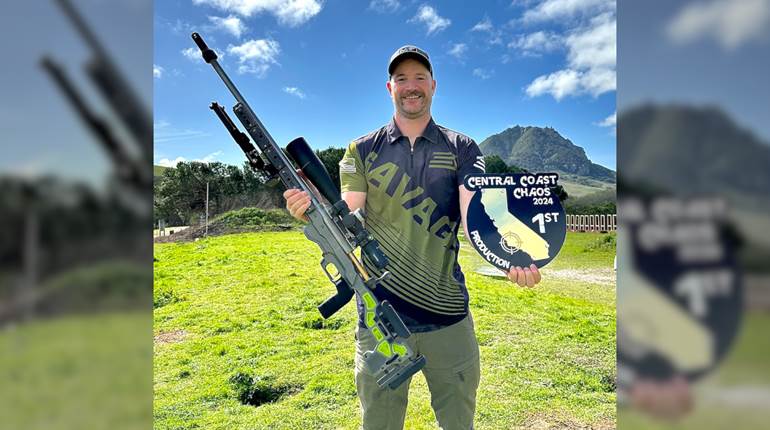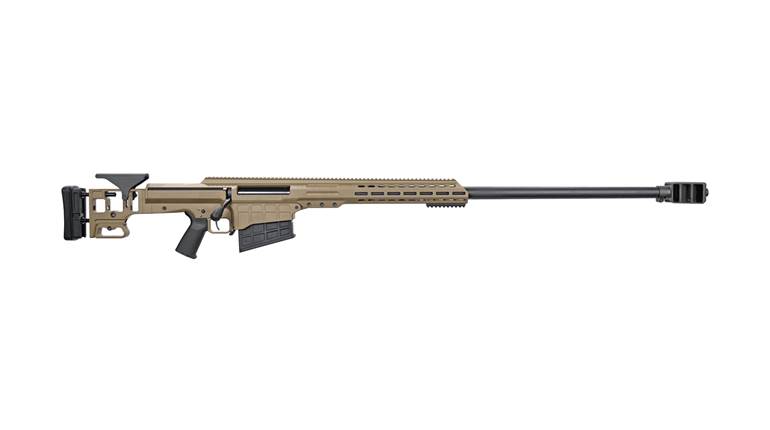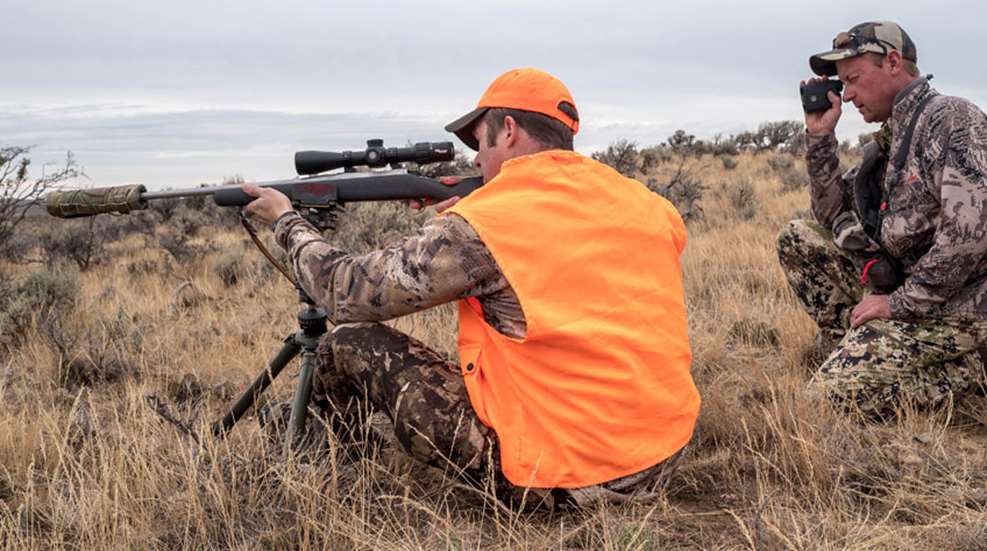
I’m not sure where it started, but it probably goes back to the blackpowder era when velocities were slow and sight radius was a determining factor in rifle accuracy. Many hunters and shooters still feel that, in order for a rifle to be capable of long-range accuracy, it has to be big and heavy and wear a long barrel.
Sure, heavy rifles are forgiving to shoot and are ideal for long-range matches with high round counts, but are they necessary in every context? Technology has changed considerably in the past few years, particularly when it comes to ammunition components and optics.
Thanks to these advancements, many of today’s lighter, more compact guns with carbine-length barrels are able to hang with the big boys. So, we set out to determine exactly how capable a lightweight rifle can be.
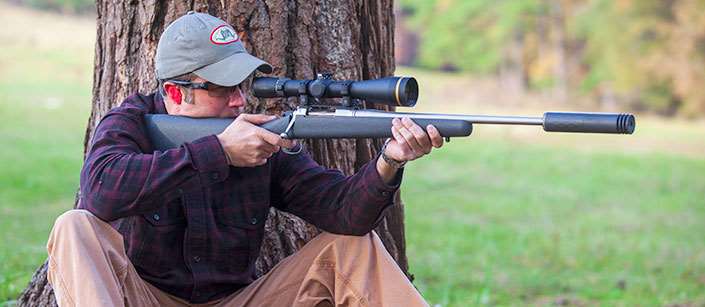
Early in the smokeless-powder era, pre-scope carbines such as the Winchester 1894 and Mannlicher-Schoenauer 1903 were light and handy because hunters were not encumbered with the notion of hitting things that they could not see with the naked eye.
In the military context, barrels were getting shorter and shorter during this time frame: The German Kar. 98k was 6" shorter than its World War I counterpart, and the same miniaturization occurred with the Russian Model 1891 as well. The futuristic StG44 was shorter yet.
Then came the post-World War II popularity of scopes among hunters. With 4X and 6X optics mounted, folks wanted to hit those far-off creatures, and the answer was adding more powder to the equation. Before the advent of scopes with reliable and repeatable elevation adjustments and reticles, long-range shooting meant added velocity.
In order to flatten the ballistic curve, bullets were pushed as fast as possible to minimize the need for holdover in hunting situations. The result was the popularity of cartridges such as the .264 Win. Mag. as well as the various Weatherby cartridges.
These cases burn lots of powder and maximize their velocity potential using longer barrels, usually up to 26". The problem is that longer barrels make for rifles that are heavier and less compact than they otherwise could be, and don’t usually add any benefit in terms of actual accuracy.
My first African safari was with a .300 Win. Mag. with a 26" barrel. That rifle was fantastic on the open plains but, in the thick jess, it was less than ideal. Long barrels give us velocity gains, and reduced muzzle blast, but little else. We need velocity if we are shooting at long distances, though, right? Well, maybe not.
If we look at the Precision Rifle Series and the National Rifle League, which can be viewed as the pinnacles of the practical long-range shooting sports, we do not see competitors using high-velocity cartridges.
The most popular rounds for these matches, which can require hitting targets well beyond 1,000 yds., are ones that pair relatively mild velocities with long, high ballistic coefficient (BC) bullets. Cartridges such as the 6 mm Creedmoor, 6 mm Dasher, 6.5x47L and 6.5 mm Creedmoor reign supreme.

The reason these cartridges are so popular in long-range circles are many. For starters, they have minimal recoil, which helps competitors spot their hits on target, thereby providing a time advantage. Secondly, these cartridges have proven to be consistently accurate at a variety of ranges thanks to case design, chamber geometry and high-quality bullets.
Consistent velocity is key in the long-range game since variations can cause significant vertical dispersion, and these cartridges are great in this regard with 10-round strings often resulting in standard deviations of less than 10. Finally, to protect the steel targets used in these matches, there are velocity limits placed upon competitors, which exclude many magnum cartridges altogether.

So how are these mild-mannered rounds capable of hits at such extended ranges? With the advent of laser rangefinders, ballistic reticles and elevation turrets, a flat trajectory is no longer the be-all for hitting things at distance. In theory, the shooter simply uses the reticle’s hold-overs or dials-up for the distance and sends the shot.
Sure, velocity is an advantage here but, at least in the competitive context, the juice isn’t worth the squeeze. Now, the average barrel length in practical rifle matches is 26", which certainly maximizes the velocity potential of a given cartridge, but only in rare events are those large, heavy rifles carried over any meaningful distances. Hunters have other needs.
In 2017, Barrett Firearm Mfg. found its way into the lightweight hunting rifle business. Chris Barrett, the company’s president, who previously served for more than a decade as its lead designer, wanted to address the shortcomings of many of the hunting rifles that he’d used in the field.
After having an expensive custom rifle fail him on an antelope hunt due to dust that bound-up the action, he created a rifle that had precise tolerances where it needed them as well as room for dust and dirt to migrate so that it could continue to function in austere conditions. The result of Barrett’s efforts was the Fieldcraft, a lightweight high-performance bolt-action built with the same quality that has made the Barrett name synonymous with long-range military hardware.
There are a few qualities that make Fieldcraft rifles unique. For starters, the actions are scaled appropriately to the cartridges used, so they are as slim and trim as possible. The blind internal magazines are sized properly as well, allowing handloaders to seat bullets at or near the lands of the rifling, which can be a key accuracy component.
Long, heavy bullets with high BCs are essential in the long-range game, and Fieldcraft rifles have the correct rifling twists to stabilize these bullets. Each Fieldcraft’s barreled action is individually pillar-bedded to its own carbon-fiber stock for a perfect fit, something that is less common than you might imagine at this price point—most production makers simply bed stocks to a “slave” action, which often results in a sloppy fit. Finally, Fieldcrafts are fit with adjustable Timney triggers for a light and clean break, one of the most important elements in practical field accuracy.
Fieldcrafts are available in a variety of chamberings with varying barrel lengths. We obtained two sample rifles chambered in 6 mm Creedmoor, a Standard model with a 21" barrel and the Threaded version with an 18" bore. Besides being trim and compact, both models are very light—weighing-in at around 5 lbs.—making them very portable in real-world hunting situations. The beauty of the Fieldcraft is that, once you add the scope, mounts, sling and sound suppressor, you have a capable rifle right around the 7-lb. sweet spot.
Thanks to too much shooting with unprotected hearing in my youth and the fact that my son often tags along with me when I hunt these days, I’ve become a firm believer in using suppressors afield when possible. Suppressors are not “movie quiet,” especially with supersonic rifle cartridges, but they do reduce both decibels and recoil.
Other than the complicated process of obtaining one, the biggest challenge of hunting with a suppressor is its added size. Thread one onto a 24" barreled rifle and good luck making it through the woods without snagging anything. With the 18" Fieldcraft, though, the overall length of a rifle with a suppressor attached is essentially the same as that of a traditional hunting rifle. Best of all, Barrett did not simply apply threads the barrel on its Fieldcraft; it machined a sturdy shoulder onto which the suppressor can index securely and repeatedly.
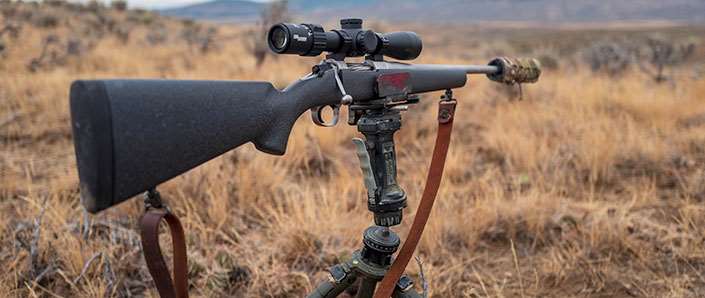
I have hunted almost exclusively with a Fieldcraft chambered in 6.5 mm Creedmoor for the past three seasons, always with a suppressor attached. I’ve carried this rifle from the high deserts of Colorado to the thick pine forests of the Southeast, and have found it equally suited across the spectrum of hunting scenarios.
Pronghorn antelope are among the wariest of game animals and often require relatively long shots thanks to their keen eyesight and the wide-open terrain that they inhabit. One wouldn’t traditionally choose an 18"-barreled rifle for a pronghorn hunt, but that is exactly what I did.
Using my Fieldcraft equipped with a SilencerCo Omega 300 suppressor, I sent a 143-gr. Hornady ELD-X bullet through the heart of a buck at just under 400 yds. Two years later the same rifle and bullet combo flattened an Alabama whitetail, with several other animals having fallen in-between, each using a different scope.
The 6 mm Creedmoor cartridge was built from the ground up by Hornady ballisticians for precision shooting, making it an ideal chambering for our project. The 6 mm shares the same design characteristics that have made its 6.5 mm counterpart such a success, including tight chamber throats and the use of long bullets with high BCs.
With our two Fieldcrafts, we used both the 103-gr. ELD-X Precision Hunter and 108-gr. ELD Match loads in our testing. To keep things as consistent as possible, we used the same Leupold VX-5HD 4-20X 52 mm for all of our range work, secured in Leupold rings on a Talley Picatinny rail. This is a big scope with a 34 mm main tube but, mounted to the little Barrett, it still makes for a reasonably sized package.

With each rifle, we settled-in at a 100-yd. zero and fired some three and five-shot groups to establish an accuracy baseline. Both rifles were sub-minute-of-angle (m.o.a.) accurate with either ammunition at 100 yds., which did not surprise me based on my history with the Fieldcraft. We re-zeroed both guns at 200 yds. and found that our groups were not noticeably larger than those at 100.
Once the point-blank work was done, we used the Hornady 4DOF ballistic app and the m.o.a.-based Leupold CDS turret to dial for hits at longer distances. My 325-yd. Pepper Popper target showed a single smear the size of a golf ball after three shots with either 6 mm.
At 400 yds., which depending on the conditions is knocking on the door of my personal limit for taking an animal, we dialed 4.6 m.o.a. of elevation to get ourselves on target. Group after group measured under three inches on my 12" plate of AR500 steel, with the best results coming from the 18" model.
Using the 103-gr. ELD-X Precision Hunter load, our 21" Standard Fieldcraft had an average muzzle velocity that was almost exactly 100 f.p.s. faster than the 18" Threaded model. With a 200-yd. zero, that translates to maximum-point-blank ranges of 285 and 275 yds., respectively. You read that correctly, three additional inches of barrel only bought us 10 yds.
Let’s put hunting ethics aside for the sake of science and push things further. At 600 yds. the longer-barreled Standard drops 5.5" less, just under 1 m.o.a. How many of us actually shoot game at such distances? Not me, but maybe you want to ping some steel with your hunting rifle to test your skill.
At 1,000 yds., our 100 f.p.s. gain results in two feet less drop, which is still only 3 m.o.a. Unless you run out of adjustment, the difference in dialing 27 versus 30 m.o.a. is pretty moot. For the record, our VX-5HD has an elevation-adjustment range of 110 m.o.a. (55 from the center) which, combined with our 20-m.o.a. angled scope base, keeps us on target out to around 1,500 yds. Still think you need a longer barrel?
Whether you are in the market for a lightweight rifle for a high country sheep hunt or a compact setup for climbing in and out of tree stands, the Fieldcraft is a strong option. Don’t let its short barrel fool you in terms of its performance—these rifles are accurate, reliable and capable of making hits at beyond any reasonable hunting distance.













